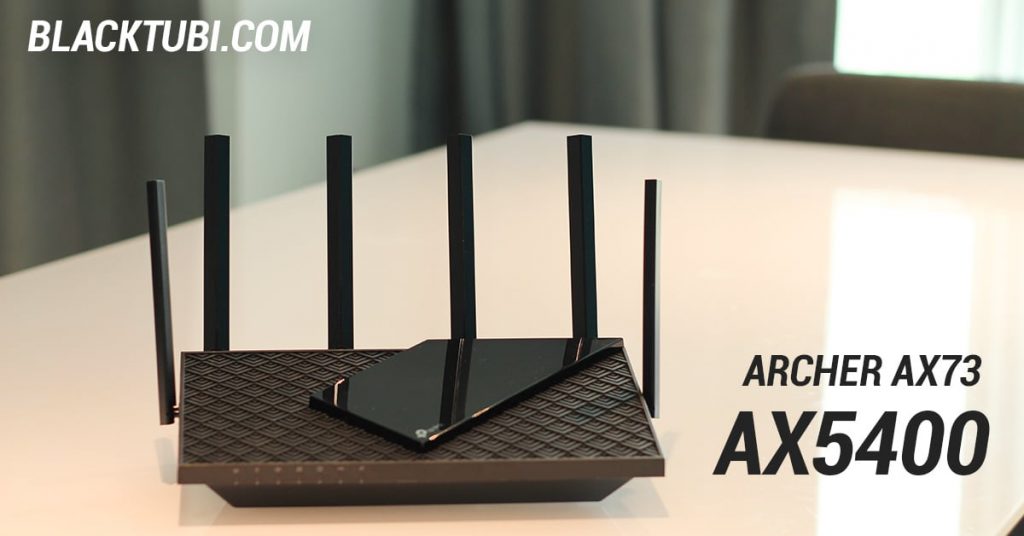
It’s 2021 and the pandemic is still here. This means we’re still working from home until things get better. Having a reliable and fast WiFi connection is crucial for work productivity. Thus, that brings us to the new TP-Link Archer AX73, a high-performance AX5400 wireless router now available in Malaysia.
The Archer AX73 is a high-performance WiFi 6 router. It can support total WiFi link speed up to 5400Mbps with dual-band configuration. In fact, the router supported the 160Mhz mode which means the 5Ghz WiFi network can get really fast if you have a 160Mhz supported WiFi adapter.
What’s so good about the Archer AX73 is the price. It is available for sale at just RM399 in Malaysia with a 3 years one-to-one exchange hardware warranty and after sales support from TP-Link Malaysia.
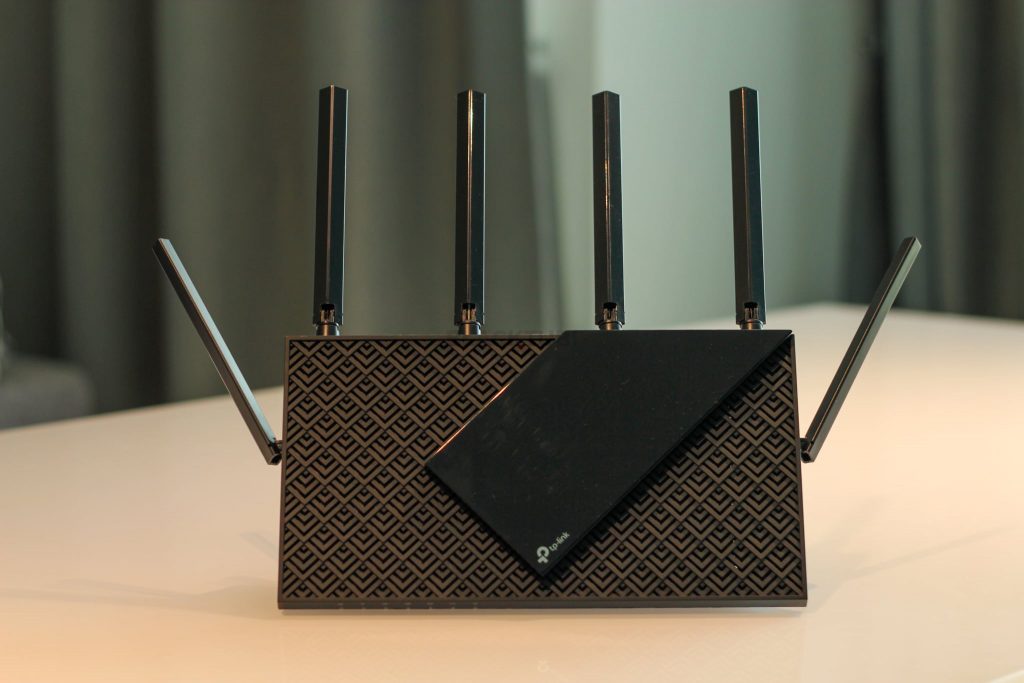
Table of Contents
The first thing that you’ll notice from the Archer AX73 is the 6 antennas. These antennas are real and not just for show. We’ve taken apart router and identified that 4 antennas are used for the 5Ghz network and 2 antennas are used for the 2.4Ghz network.
The reason why there are 6 antennas is because the Archer AX73 uses an individual antenna for each transmit channel rather than combining both the 2.4Ghz and 5Ghz into a single antenna. Rather than using a dual-band antenna, each antennas on the router are optimized for their desired frequency, resulting in better performance without compromises.
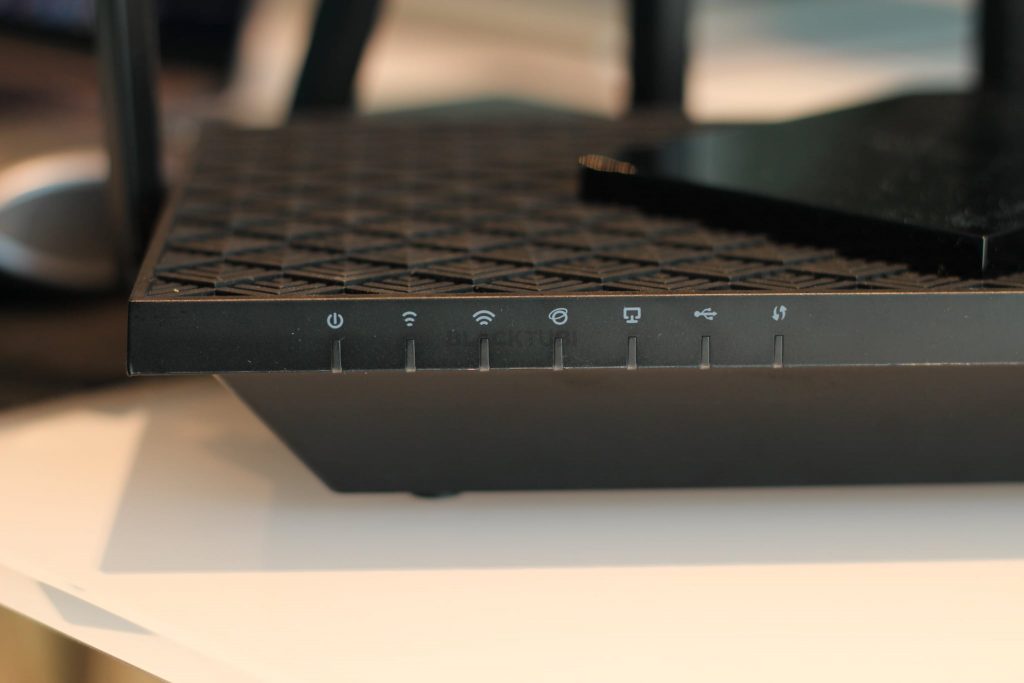
The Archer AX73 also runs really cool and stable in our test. It’s because TP-Link used a much larger heatsink and added more ventilation. This is why the Archer AX73 is so big and heavy! In fact, it barely heats up even on prolonged stress test and certainly much cooler than the infamous Archer AX50.
Hardware and Specs
| Wireless 2.4Ghz | Wi-Fi 6 up to 574Mbps (40Mhz 2X2) |
| Wireless 5Ghz | Wi-Fi 6 up to 4804Mbps (160Mhz 4X4) |
| WiFi Features | OFDMA, MU-MIMO, Beamforming, WPA3, OneMesh |
| CPU | Broadcom BCM6750 1.5Ghz Triple-Core |
| Ethernet Ports | 1x Gigabit WAN port + 4x Gigabit LAN port |
| USB | 1x USB 3.0 port |
The Archer AX73 is powered by a fast Broadcom 1.5Ghz Triple-Core CPU and comes with 512MB RAM. TP-Link says this router can actually support up to 200 devices connected simultaneously. While I don’t have 200 devices to test, the router do work realiably in my home with close to 50 devices connected to it.
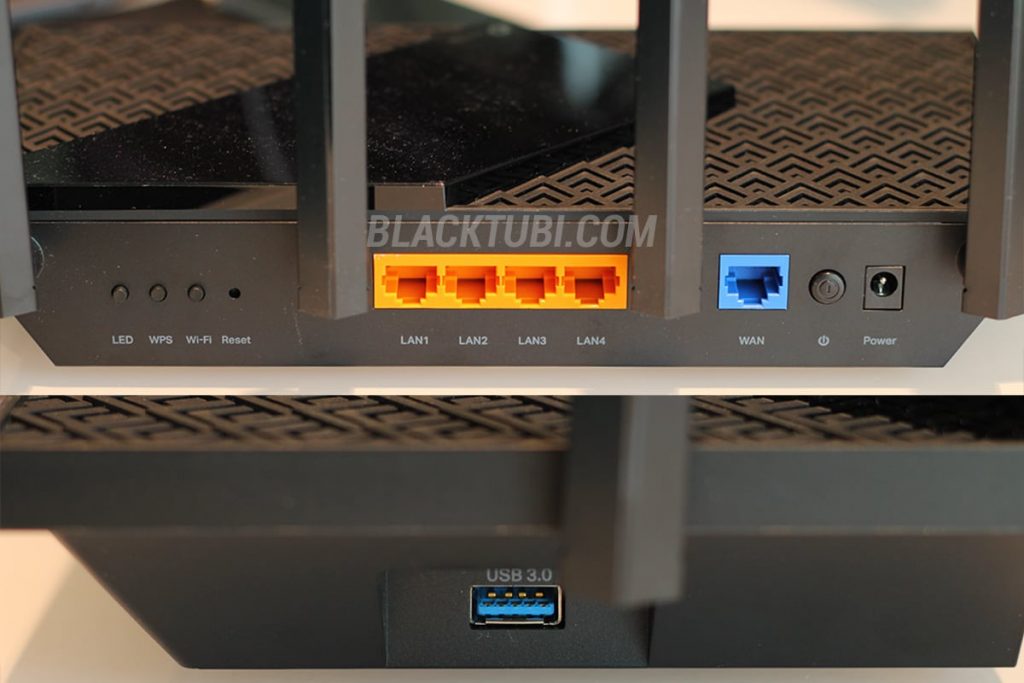
Connectivity wise, the router comes with 4 Gigabit Ethernet LAN ports and a single Gigabit Ethernet WAN port. It also comes with a USB 3.0 port which can be used for file sharing and printer sharing to devices connected to the wireless router. The LED status indicator on the router can be disabled if needed.
Unboxing Archer AX73
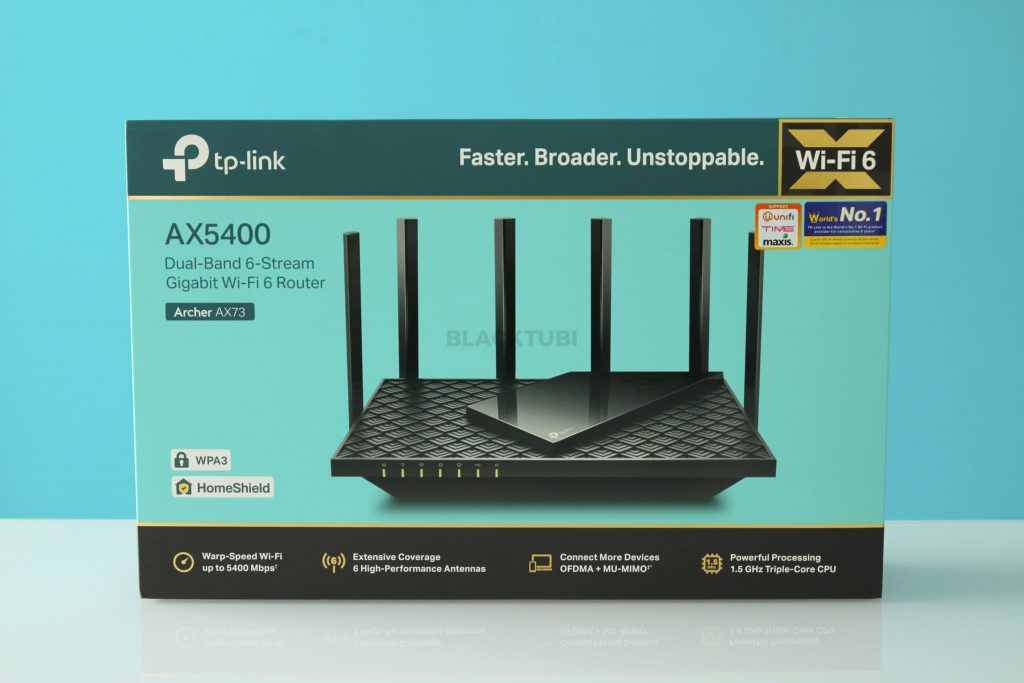
The box of Archer AX73 for Malaysia market comes labeled with support for TM Unifi, Maxis Fibre and TIME Fibre.
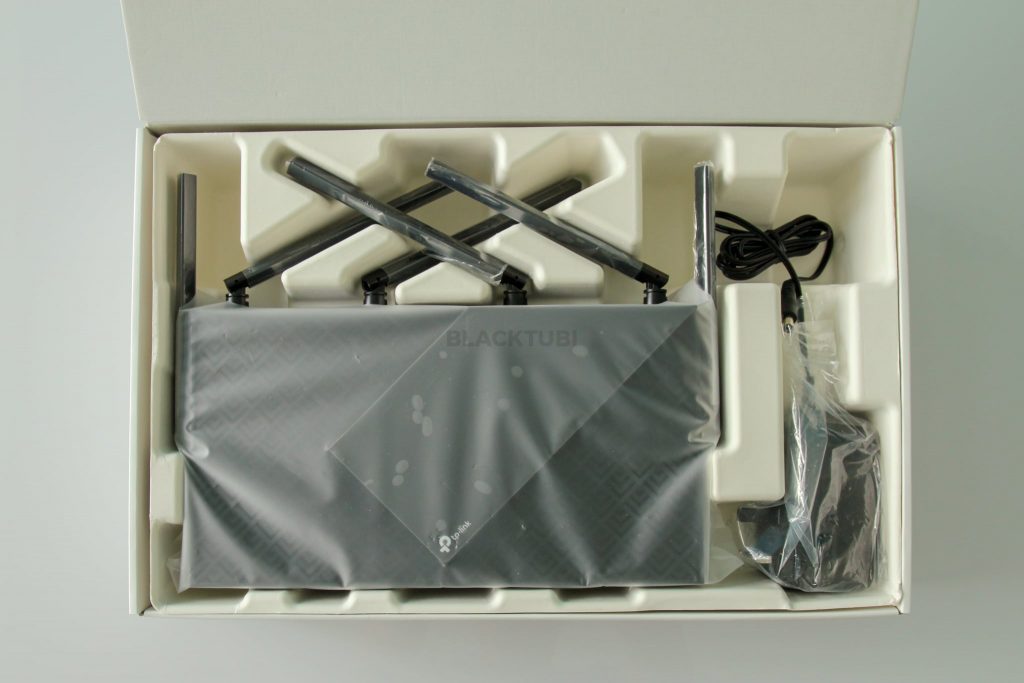
Each antenna on router and accessories are individually wrapped. The cardboard box also provide sufficient protection during shipping. It comes with a CAT5E Gigabit Ethernet LAN cable and a 12V power adapter.
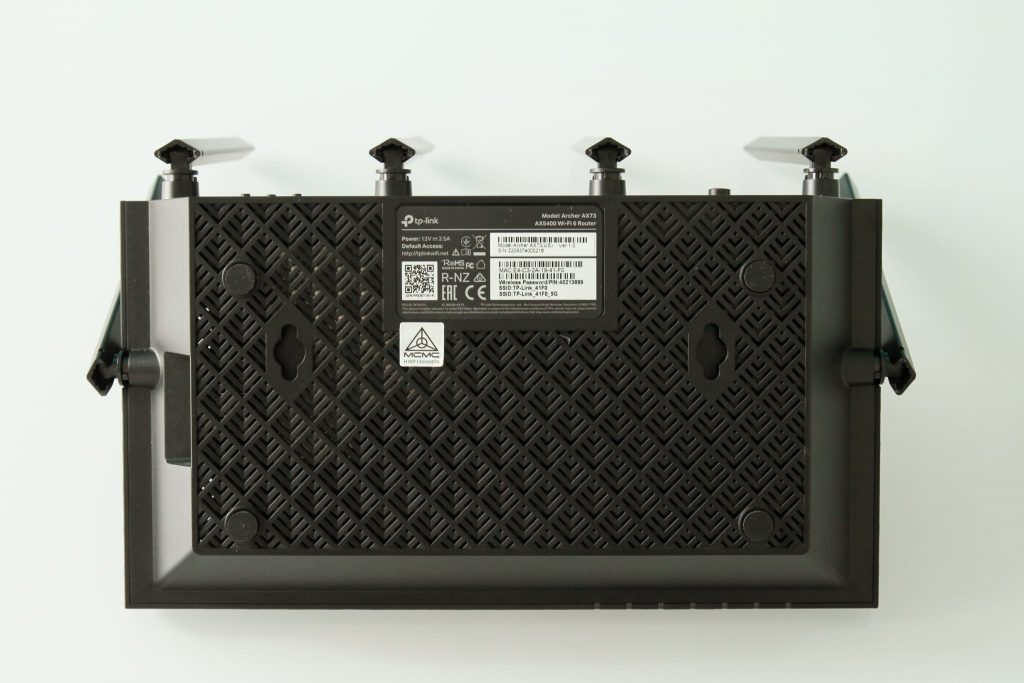
It is possible to wall-mount the wireless router with 2 mounting holes behind the product. The default WiFi name and password is also labeled on the back of the router. Similar to the top, the entire bottom of the product is full of ventilation holes for enhanced cooling performance.
Quick Teardown
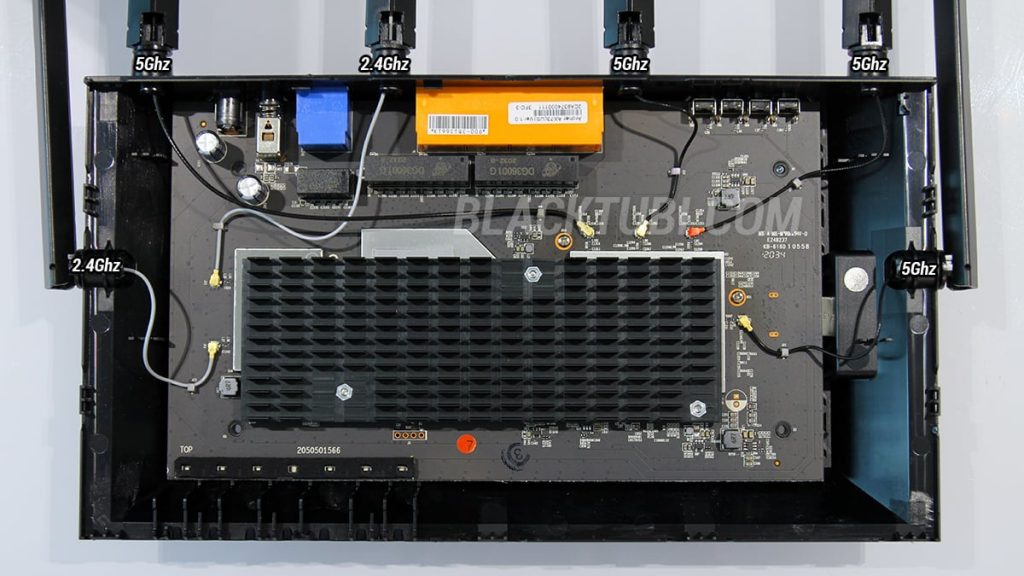
I also did a simple teardown for the Archer AX73. Since I am not a hardware enginee, I won’t comment much about this. WiFi related components are shielded and there’s a decent sized heatsink to cool down the router. This explains why this router barely heats up.
Wi-Fi Performance
With the beefy specifications, let’s see if that actually transfer into actual performance in our benchmark test. I will be using a laptop with the Intel AX200 wireless adapter and an iPhone to test the 5Ghz Wi-Fi 6 performance of TP-Link Archer AX73. I will be skipping the 2.4Ghz result as it is probably irrelevant these days given how congested is the 2.4Ghz channel.
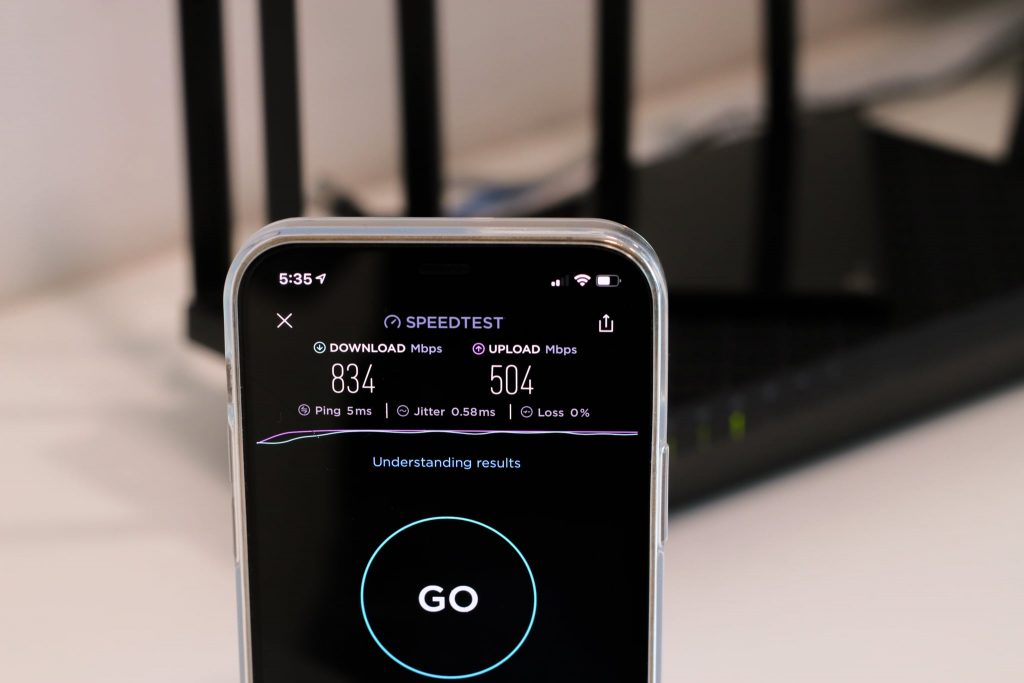
At short distance to the router, my iPhone can achieve over 800Mbps on the 5Ghz Wi-Fi network. This is not surprising considering most Wi-Fi 6 routers, even the budget models like Archer AX10 can deliver such performance. What we really want to know is the long range signal coverage and performance.
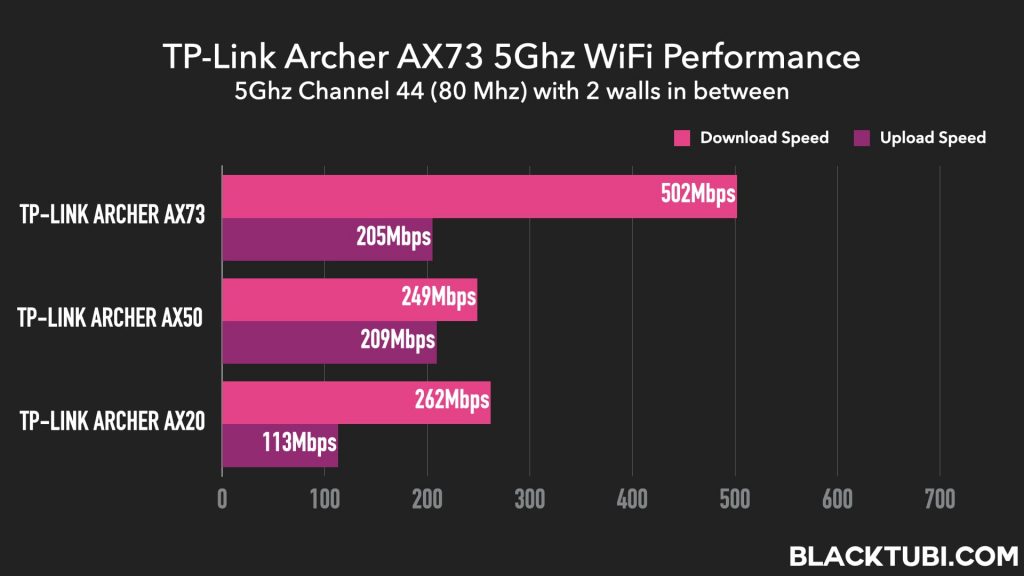
The 5Ghz signal on the Archer AX73 is really strong! The 5Ghz coverage and performance is faster and stronger than every single AX3000 wireless router that we’ve tested on this site. The performance is also stable and consistently replicable througout our review.
Security wise, it can support the latest WPA3 security right out of the box. However, I do not recommend using WPA3 as older WiFi devices may face compatibility issues. Considering a router last many years, you can consider enabling it few more years in the future as older devices are phased out from your home.
Firmware and Features
TP-Link maintain their philosophy of not overly bloating the firmware with features and I think it works here. Reliability is the keyword here as I find the Archer AX73 firmware is very well optimized. During my test, I do not face any issues with the router. The firmware always responded fast consistently.
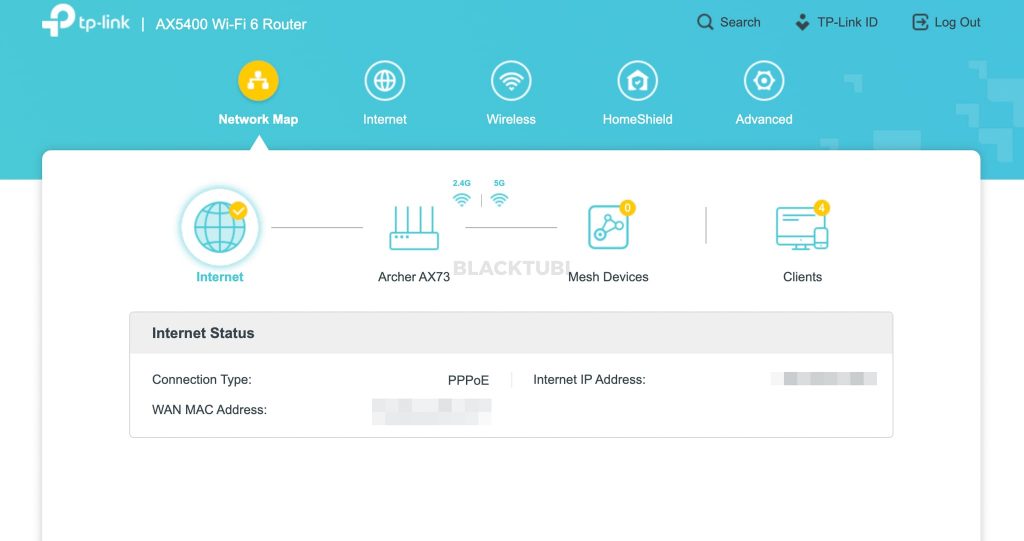
The web interface is simple to operate and certainly very easy to setup the router. It can support TM Unifi, Maxis Fibre and all ISPs in Malaysia. For most users, it will involve connecting the router to the modem and use the setup wizard on the interface. The VLAN profile must be selected for TM Unifi or Maxis Fibre users in Malaysia.
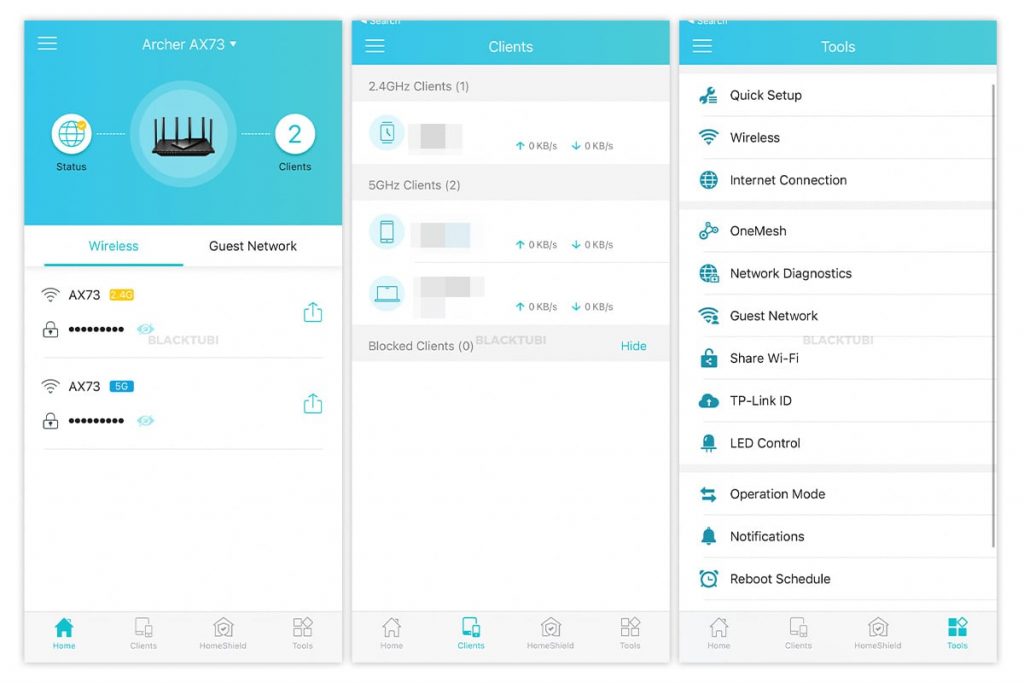
TP-Link Tether app offers a quick overview of your home network condition such as connected devices and network speed. The app is well designed and really responsive in our test. It is securely linked to TP-Link cloud and authenticated with your personal TP-Link account. TP-Link HomeShield security feature is only accessible on the app as well.
TP-Link HomeShield Security
TP-Link HomeShield is their new commercial grade firewall replacing the previous HomeCare feature. It can protect your devices from accessing a malicious website containing a virus or malware with an advanced antivirus firewall. This feature is now powered by Avira Antivirus database.
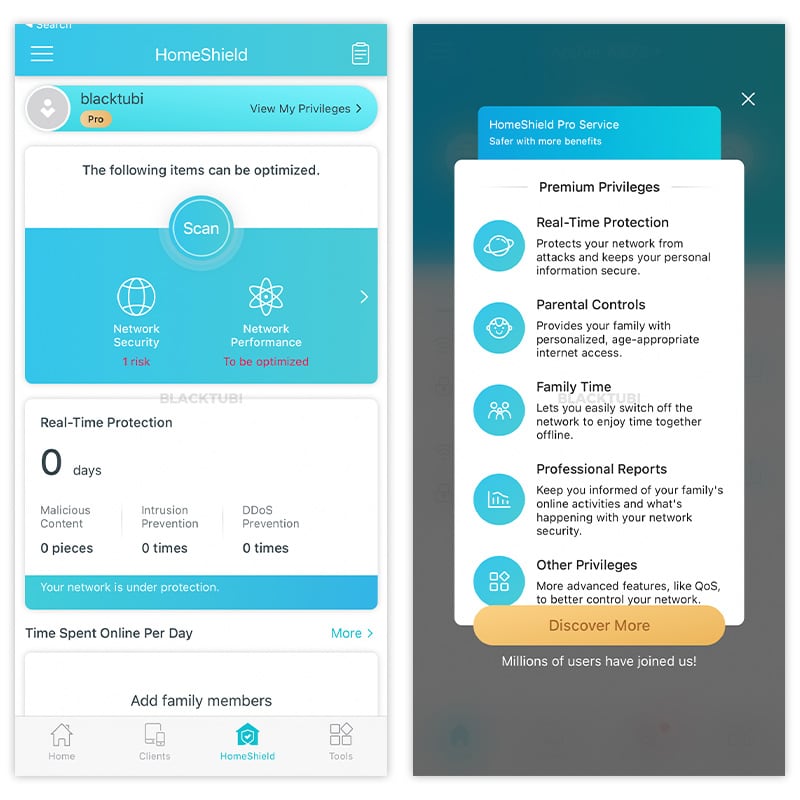
It also added protection for smart home and IoT devices. Considering these devices rarely receive firmware updates, having extra protection is certainly helpful. TP-Link claims it can protect an insecure device from being used as a loophole to launch attacks on your home network. We have no way of verifying these claims.
HomeShield Parental Control
TP-Link new HomeShield parental control is also much smarter than before. It can perform content filtering by category and usage time limitation. The categories are more comprehensive covering more websites than before. Based on our testing on some known sites, it is certainly more effective than HomeCare and other similar systems that we have tested on other brands.
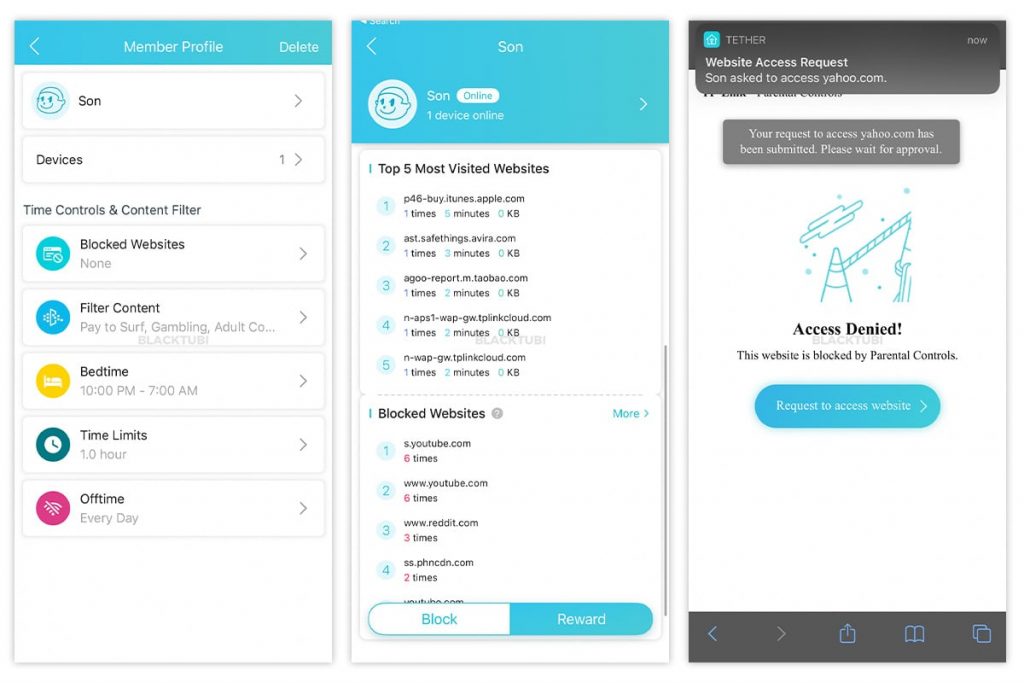
What’s so great about the new parental control is the ability to display usage charts and web history. It will show the top browsed website and attempts to access a blocked website by each user. If a page is blocked by the parental control feature, the user can request for access in which the admin can approve it via the TP-Link Tether app.
However, the upgraded HomeShield feature is not fully free. The Free tier only comes with the basic firewall without the advanced malicious content filtering feature. It also does not provide the comprehensive reporting of the parental control feature. More details available on TP-Link website here.
TP-Link HomeShield feature is a really robust parental control. While TP-Link provide a 30 days free trial of the Pro tier, it will cost RM24.90 per month after the trial has ended. I am fine with a subscription based business model but I find the price is too much.
OneMesh Capability
For those staying in a bigger home, it’s possible to link the Archer AX73 with a OneMesh extender. The OneMesh extender will then work together with the Archer AX73 resulting in a stronger WiFi coverage with true mesh WiFi features like seamless roaming and band steering unlike a traditional WiFi extender.
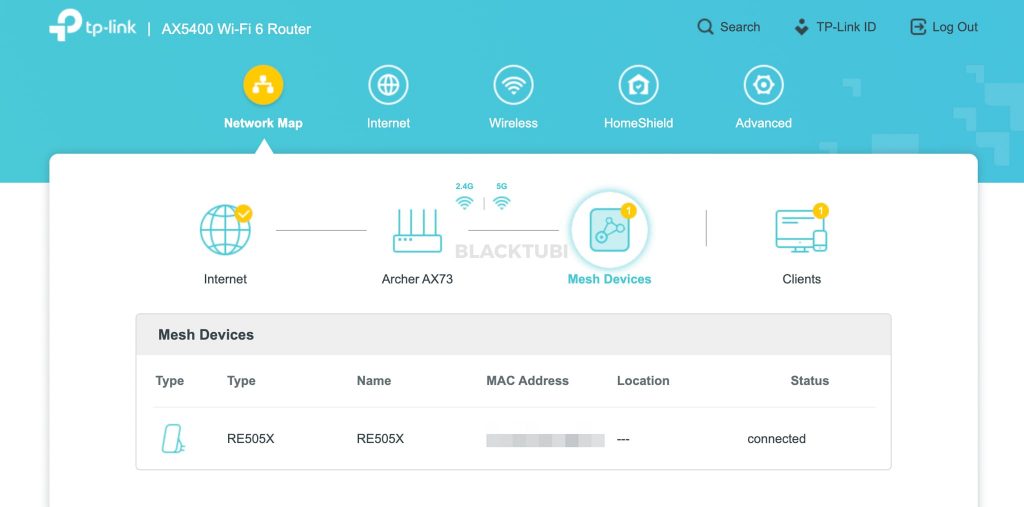
For the Archer AX73, I will only recommend linking it with a WiFi 6 OneMesh extender such as the RE505X and RE605X. Unfortunately, TP-Link does not allow router to router OneMesh currently. You also cannot link the Archer AX73 to a Deco Mesh WiFi system directly as they are based on a different technology.
Closing Thoughts
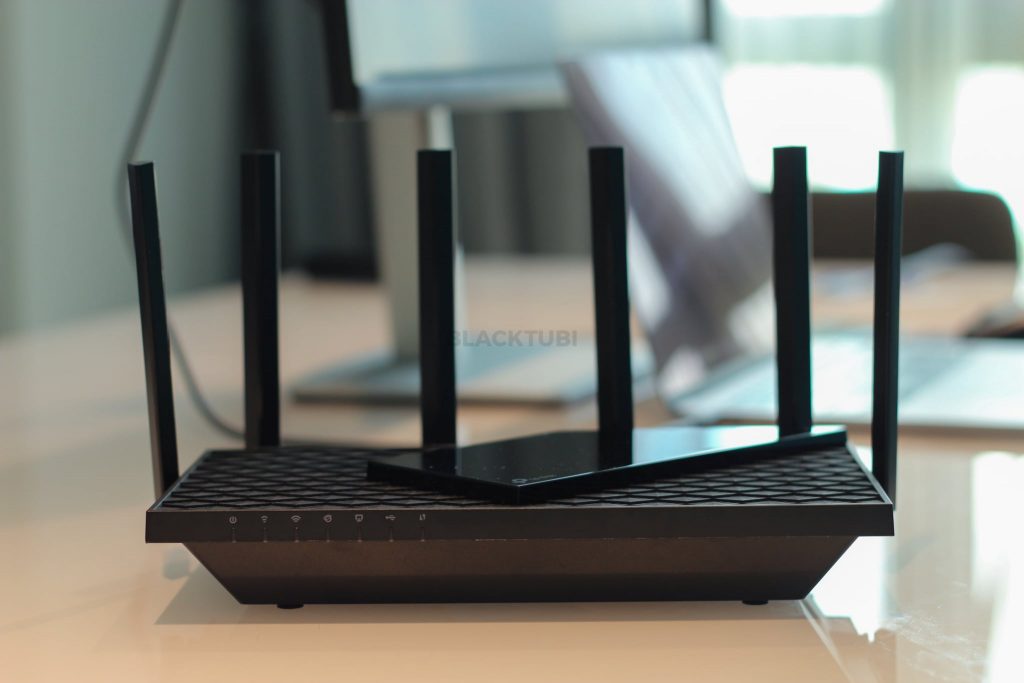
At RM399, the Archer AX73 offers really good performance even when comparing to some other routers that cost twice as much. It offers really good 5Ghz WiFi coverage and very fast WiFi speed on the 5Ghz channel with 160Mhz. Coupled with a fast 1.5Ghz Triple-Core CPU, it is a really good product from TP-Link.
TP-Link software is also smarter than before with a robust class-leading parental control feature. TP-Link is committed to provide more security to smart home and IoT devices with the new HomeSuite security suite. WPA3 security is also supported right out of the box.
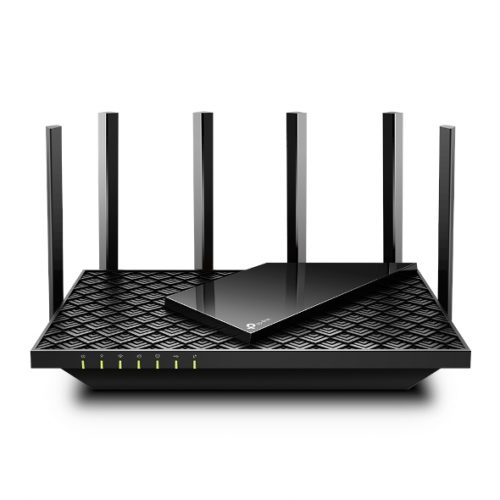
TP-Link Archer AX73
9.2
Tubi Rating
pros
- Premium performance at affordable price
- Robust HomeShield parental control solution
- Stable and reliable software
- Good security
CONS
- Advanced HomeShield features require a subscription
- Limited OneMesh support

What do you think of this model vs asus tuf ax3000? Especially on the coverage and speed when the device is farther away from the router?
I think the Archer AX73 is slightly better on coverage and speed at long distance. But if you need long distance coverage, I will suggest using mesh WiFi instead.
Thank you so much sir for the honest review! I have a question for you. Have you tried this https://www.asus.com/my/Networking-IoT-Servers/WiFi-6/All-series/RT-AX82U/ ?
I don’t know how to compare between this and the link that I shared. In your opinion, which one should I buy? I hope you can reply ASAP. Thank you again sir.
No, I have not tested the ASUS RT-AX82U. However, considering that both models are pretty much using the exact same chipset, they should perform rather similarly. I guess the ASUS have an edge on the gaming features.
RE505x is a repeater and not mesh. Do not mix up the function ofesh vs repeater.
The RE505X will function as a OneMesh mesh node when used with a OneMesh compatible router with all the benefits of a mesh WiFi system like AP steering, band steering and seamless networking roaming. In fact, the mesh implementation is better than some other DIY-based mesh approach and it’s really close to TP-Link’s own Deco lineup.
I am planning to replace my ASUS RT-AC68U which is dead now with this router..it was working great for years until it started malfunctioning recently. Would this be a better replacement for RT-AC68U or should I consider some other options?..I am also thinking about getting one unit of a mesh router and later add additional units if required. Do you think if I go with Deco X60 it would be equally good as AX73? are the decos come with usb ports?
The Archer AX73 WiFi signal is much stronger than the RT-AC68U for sure. Deco X60 is a different product lineup. I think the Archer AX73 + OneMesh extender is a better solution.
If were to compare Deco M9 Plus single unit and AX73, which has better wifi coverage?
On a single unit basis, the AX73 is definitely better. But the Deco M9 Plus will provide better total performance when using 2 units or more.
Hi… compared this ax73 to ax50, how about the thermal issue on this ax73? is it better than ax50?
It is must better than AX50.
D-Link X5460 or TP-Link AX73?
I think the Archer AX73 have a significantly better WiFi performance than D-Link X5460 in my test.
hmm, kinda odd as both routers use almost the identical specs (cpu,ram), what’s ticking me off for the ax73 is that it couldn’t pair with another ax73 to form a mesh, and also my current ax50 can’t be used as a repeater hence it’s what’s turning me off in getting the router.
Not really. The AX50 is based on Intel CPU and radio while the AX73 is based on Broadcom CPU and radio.
Currently I am using the Deco M9 Plus Single Pack. I am thinking to get this and set it as the main. Then can I use the Deco M9 Plus as a mesh, will it work?
One of the Deco M9 Plus will still need to be connected to the Archer AX73 in this case.
Hi. Just wanna ask how is tp link archer ax73 compares to asus rt-ax86u? Which one has less lag and wider coverage? Thanks.
The RT-AX86U performs better but it is not in the same class considering it costs 3 times as much. The proper TP-Link contender to the RT-AX86U is the Archer AX6000.
Ok thank you so much for your input!
Do you think this would be compatible with DiGi Home Fibre Broadband?
I see most routers only mention compatibility with UniFi, Maxis and Time
Yes, it is compatible. You will need to manually configure the VLAN settings.
does this router has a wifi bandwidth control function?
No it doesn’t have such feature.
well thats a little disappointment since i really need that type of function ,any suggestion of a router that can does that sort of feature? perhaps a new one
I doubt any modern consumer WiFi routers still provide WiFi bandwidth control, I know older TP-Link does provide that. Some brands do offer individual device control based on MAC address but not for the entire WiFi network.
Hi Sir,
Recently I’ve purchased AX73, and yes, significantly improve in terms of speed and coverage! (Used Tp link AC1200 Unifi default router previously).
One question about this router, does it make a difference by using CAT 5e cable or CAT 6/6A cable ?
If Yes, what’s the difference?
I doubt it will make a huge difference on short distance. A good quality CAT5E is perfectly capable of Gigabit speed.